

Travel Stock Photos, Images & Photography. Map of europe. Marseille. Second-largest city of France and prefecture of Provence-Alpes-Côte d'Azur Prefecture and commune in Provence-Alpes-Côte d'Azur, France Marseille ( mar-SAY, also spelled in English as Marseilles; French: [maʁsɛj] ( listen), locally [maχˈsɛjə] ( It was known to the ancient Greeks as Massalia (Greek: Μασσαλία, romanized: Massalía) and Romans as Massilia.[7] Marseille is now France's largest city on the Mediterranean coast and the largest port for commerce, freight and cruise ships.
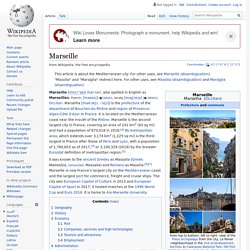
The city was European Capital of Culture in 2013 and European Capital of Sport in 2017; it hosted matches at the 1998 World Cup and Euro 2016. Geography[edit] Marseille is the second-largest metropolitan area in France after Paris. History[edit] Marseille was a Gauls port center that became the Greek colony of Massalia circa 600 BC, and was populated by Greek settlers from Phocaea (modern Foça, Turkey). Amsterdam. Capital and largest city of the Netherlands Capital city and municipality in North Holland, Netherlands Amsterdam (, UK also ;[10][11] Dutch: [ɑmstərˈdɑm] ( listen)) is the official capital and most populous city of the Netherlands; with a population of 872,680[12] within the city proper, 1,380,872 in the urban area,[5] and 2,410,960 in the metropolitan area.[9] Found within the province of North Holland,[13][14] Amsterdam is colloquially referred to as the "Venice of the North", attributed by the large number of canals which form a UNESCO World Heritage Site.
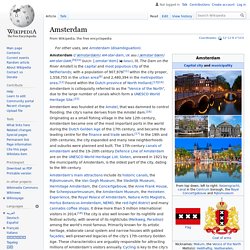
Amsterdam's name derives from Amstelredamme,[15] indicative of the city's origin around a dam in the river Amstel. Prague. Capital of the Czech Republic Capital city in Czech Republic Prague (; Czech: Praha [ˈpraɦa] ( listen), German: Prag, Latin: Praga) is the capital and largest city in the Czech Republic, the 14th largest city in the European Union[9] and the historical capital of Bohemia.

Situated on the Vltava river, Prague is home to about 1.3 million people, while its metropolitan area is estimated to have a population of 2.6 million.[4] The city has a temperate oceanic climate, with relatively warm summers and chilly winters. Prague is a political, cultural and economic centre of central Europe complete with a rich history. Greater Glasgow. Greater Glasgow is an urban settlement in Scotland consisting of all localities which are physically attached to the city of Glasgow, forming with it a single contiguous urban area (or conurbation).
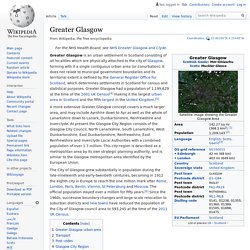
It does not relate to municipal government boundaries and its territorial extent is defined by the General Register Office for Scotland, which determines settlements in Scotland for census and statistical purposes. Greater Glasgow had a population of 1,199,629 at the time of the 2001 UK Census[4] making it the largest urban area in Scotland and the fifth-largest in the United Kingdom.[5] A more extensive Greater Glasgow concept covers a much larger area, and may include Ayrshire down to Ayr as well as the whole of Lanarkshire down to Lanark, Dunbartonshire, Renfrewshire and Inverclyde.
Greater Glasgow urban area[edit] Dublin. Capital city of Ireland Capital city in Leinster, Ireland Dublin (, ; Irish: Baile Átha Cliath[12] [ˈbˠalʲə aːhə ˈklʲiə; ˌbʲlʲaː ˈklʲiə]) is the capital and largest city of Ireland.[13][14] Situated on a bay on the east coast, at the mouth of the River Liffey, it lies within the province of Leinster.
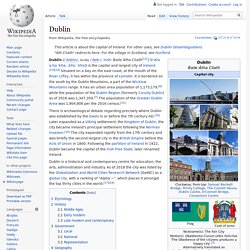
It is bordered on the south by the Dublin Mountains, a part of the Wicklow Mountains range. Florence. Capital and most populated city of the Italian region of Tuscany Comune in Tuscany, Italy Florence ( FLORR-ənss; Italian: Firenze [fiˈrɛntse] (
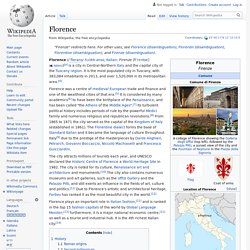
List of urban areas in the European Union. This is a list of urban areas in the European Union with over 500,000 inhabitants as of 2014.
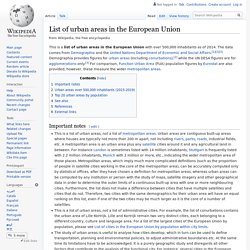
The data comes from Demographia and the United Nations Department of Economic and Social Affairs.[1][2][3] Demographia provides figures for urban areas (including conurbations),[2] while the UN DESA figures are for agglomerations only.[3] For comparison, Function Urban Area (FUA) population figures by Eurostat are also provided, however, these measure the wider metropolitan areas. Madrid. Capital city and municipality in Community of Madrid, Spain Capital of Spain Madrid (, Spanish: [maˈðɾið])[n. 1] is the capital and most populous city of Spain.
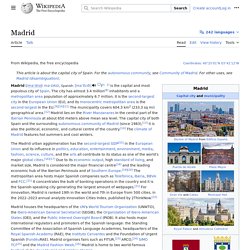
The city has almost 3.3 million[8] inhabitants and a metropolitan area population of approximately 6.5 million. Okinawa Prefecture. Prefecture of Japan Prefecture in Kyushu, Japan Okinawa Prefecture (Japanese: 沖縄県, Hepburn: Okinawa-ken, Okinawan: ウチナー Uchinaa,[1] Kunigami: フチナー Fuchinaa[2]) is the southernmost prefecture of Japan.[3] It encompasses two thirds of the Ryukyu Islands in a chain over 1,000 kilometres (620 mi) long.
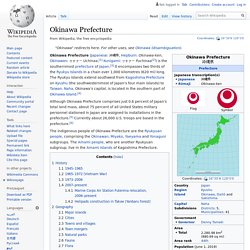
The Ryukyu Islands extend southwest from Kagoshima Prefecture on Kyushu (the southwesternmost of Japan's four main islands) to Taiwan. Taiwan. State in East Asia.
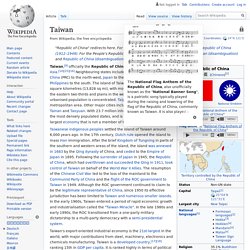
Hong Kong. Special administrative region of China Special administrative region in China Hong Kong (; Chinese: 香港, Cantonese: [hœ́ːŋ.kɔ̌ːŋ] ( Hong Kong became a colony of the British Empire after Qing China ceded Hong Kong Island at the end of the First Opium War in 1842.[16] The colony expanded to the Kowloon Peninsula in 1860 after the Second Opium War, and was further extended when Britain obtained a 99-year lease of the New Territories in 1898.[17][18] The territory was returned to China in 1997.[19] As a special administrative region, Hong Kong maintains separate governing and economic systems from that of mainland China under the principle of "one country, two systems".[20] Etymology History After the Qing conquest, maritime trade was banned under the Haijin policies. In 1839, the Daoguang Emperor rejected proposals to legalise and tax opium and ordered imperial commissioner Lin Zexu to eradicate the opium trade.
Immediately after the transfer, Hong Kong was severely affected by several crises. Singapore. Country in Southeast Asia Singapore (), officially the Republic of Singapore, is a sovereign island city-state in Southeast Asia. The country is situated about one degree (137 kilometres or 85 miles) north of the equator, at the southern tip of the Malay Peninsula, with Indonesia's Riau Islands to the south and Peninsular Malaysia to the north. Singapore's territory consists of one main island along with 58 other islets. Since independence, extensive land reclamation has increased its total size by 23% (130 square kilometres or 50 square miles).
Although its history stretches back millennia, modern Singapore was founded in 1819 by Sir Stamford Raffles as a trading post of the British East India Company. The city-state is home to 5.6 million residents, 39% of whom are foreign nationals, including permanent residents. Singapore is a unitary parliamentary republic with a Westminster system of unicameral parliamentary government.
Paris. Capital of France Place in Île-de-France, France Paris (French pronunciation: [paʁi] ( Global city. City which is important to the world economy The most complex node is the "global city", with links binding it to other cities having a direct and tangible effect on global socio-economic affairs.[1] The term "megacity" entered common use in the late 19th or early 20th centuries; one of the earliest documented uses of the term was by the University of Texas in 1904.[2] The term "global city", rather than "megacity", was popularized by sociologist Saskia Sassen in her 1991 work, The Global City: New York, London, Tokyo.[3] "World city", meaning a city heavily involved in global trade, appeared in the May 1886 description of Liverpool, by The Illustrated London News.[4] Patrick Geddes later used the term "world city" in 1915.[5] More recently, the term has focused on a city's financial power and high technology infrastructure, with other factors becoming less relevant.[6][7] Criteria Global city status is considered beneficial and desirable.
Characteristics Rankings Global Power City Index. Naples. City in Southern Italy Comune in Campania, Italy Naples (; Italian: Napoli [ˈnaːpoli] ( London. Milan. Blue Banana. The Blue Banana (also known as the European Megalopolis or the Liverpool–Milan Axis) is a discontinuous corridor of urbanisation spreading over Western and Central Europe, with a population of around 111 million.[1] The concept was developed in 1989 by RECLUS, a group of French geographers managed by Roger Brunet.[2] Lisbon. Las Palmas. Municipality in Canary Islands, Spain Las Palmas (, ;[2][3] Spanish: [las ˈpalmas]), officially Las Palmas de Gran Canaria,[a] is a city and capital of Gran Canaria island, in the Canary Islands, on the Atlantic Ocean.
Vigo. Valladolid. Córdoba, Spain. Municipality in Andalusia, Spain Today, Córdoba is still home to many notable pieces of Moorish architecture such as The Mezquita, which was named as a UNESCO World Heritage Site in 1984 and is now a Cathedral. Bilbao. Palma de Mallorca. Murcia. Málaga. Zaragoza. Barcelona. Seville. Valencia. Rick Steves' Travel Blog. Rick Steves Europe: Tours, Travel, TV & Vacations. (79) A Tour of PRAGUE, CZECH REPUBLIC: This City is Incredible! Prague czech republic. Amsterdam. Ireland. Scotland. Wales. Spain. Portugal. France.